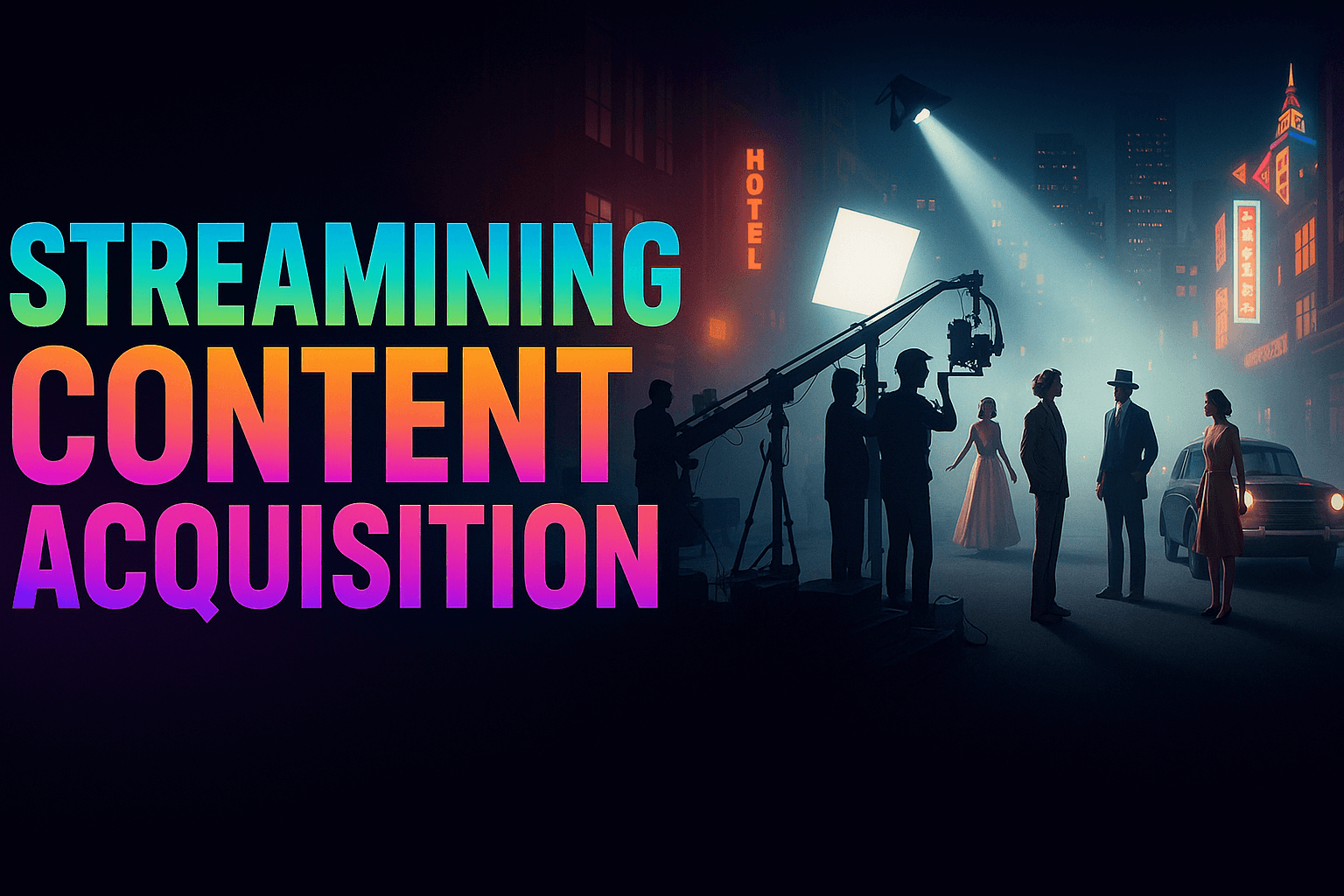Streamlining Content Acquisition Pipelines for Streaming Platforms

Introduction
In my capacity as a strategist specializing in the Media & Entertainment (M&E) supply chain, I’ve had a front-row seat to one of the industry’s most critical shifts. The era of ‘growth at all costs’ is over. Today, the singular focus for every executive at a streaming platform is profitability.
This mandate has put a spotlight on the content acquisition pipeline—the engine that fuels every successful streaming service. The traditional, fragmented approach of relying on personal networks and manual spreadsheets is no longer viable.
The modern imperative is to become a master of streamlining content acquisition pipelines for streaming platforms by adopting a data-driven, systematic methodology.
This article deconstructs the core challenges, strategic solutions, and technological advancements required to transform your content acquisition process from a cumbersome workflow into a strategic advantage.
Key Takeaways
| Core Challenge | Fragmentation, rising costs, and limited visibility make content acquisition slow, costly, and risky. |
| Strategic Solution | A data-driven, unified approach that centralizes intelligence and enables faster, more informed deals. |
| Vitrina’s Role | Provides real-time visibility into global projects and partners, empowering executives to act with confidence. |
The Strategic Imperative: Streamlining Content Acquisition Pipelines
The streaming landscape is defined by fierce competition. With households juggling multiple subscriptions, fatigue is real, and content has become the defining differentiator. The ability to secure the right titles, at the right cost, and at the right time is now the single most important driver of profitability.
Traditional pipelines—dependent on networking, trade shows, and manual scouting—are simply too slow. In today’s market, efficiency in content acquisition is no longer optional; it is a strategic necessity.
The Core Challenge: From Fragmentation to Friction
Despite the urgency, executives face persistent obstacles. Pipelines are opaque—projects surface late in their lifecycle, leaving buyers reactive. Discovery remains inefficient, with outdated tools and scattered contacts slowing progress.
Even when opportunities are identified, due diligence is incomplete, as verified information on companies, financiers, and talent is scarce. All of this plays out against the backdrop of soaring content costs, where every deal must be justified against shrinking margins.
Together, these factors create friction in what should be a growth engine, slowing platforms at a time when speed is everything.
A Strategic Framework for Content Acquisition
To move beyond these challenges, executives must adopt a framework built on three principles: proactive discovery, centralized vetting, and data-backed negotiation. Discovery shifts from waiting for projects to be pitched to actively scanning for early signals of opportunity.
Vetting consolidates all company and project intelligence into a single view, cutting weeks of research into minutes. Finally, negotiation becomes less guesswork and more strategy, guided by verified insights into partner histories, creative track records, and market benchmarks. Together, these principles transform acquisition from a reactive process into a repeatable, strategic function.
The Role of Data and AI in Streamlining the Process
Executing this framework depends on advanced data and AI. The scale of global production activity is impossible to track manually. AI tools now surface the most relevant opportunities, forecast content performance, and streamline due diligence.
Rather than replacing human judgment, these systems amplify it, allowing executives to focus on strategy while automation handles aggregation and analysis. In practice, this means spotting emerging projects earlier, forecasting their potential with greater accuracy, and entering negotiations armed with insights that competitors may lack.
Transforming Your Pipeline: How Vitrina Provides a Competitive Edge
Among available solutions, Vitrina is purpose-built to address acquisition challenges. It consolidates intelligence on over 120,000 projects, 500,000 companies, and 3 million executives into one unified platform. With Vitrina, executives can proactively scout aligned projects, vet partners with confidence, and identify co-production opportunities that extend global reach without adding risk.
This unified view reduces manual research by up to 80%, replacing scattered workflows with a streamlined, data-driven process. The result is faster deal flow and smarter decision-making in an increasingly competitive market.
Build your shortlists and find your next partner with Vitrina.
Conclusion: The Future of Content Acquisition is Strategic
Content acquisition is no longer a transactional back-office function—it is a boardroom-level priority that determines profitability and long-term success.
The future belongs to platforms that turn fragmented data into actionable intelligence, transforming acquisition pipelines into engines of growth.
By adopting a unified solution like Vitrina, executives can leave behind manual, reactive processes and embrace a proactive, data-driven approach that keeps them ahead of competitors and aligned with profitability goals.Sign-up-Today
Frequently Asked Questions
It is the end-to-end process a streaming platform uses to identify, evaluate, license, and onboard new film and TV content—from initial scouting to negotiation and ingestion.
Executives struggle with opaque pipelines, inefficient discovery, incomplete due diligence, and rising content costs, all of which slow deal-making and increase risk.
AI aggregates and analyzes vast industry data, highlighting early opportunities, forecasting performance, and reducing manual workload, so executives make better, faster decisions.
With profitability the top priority in a saturated market, a streamlined pipeline reduces costs, mitigates risks, and ensures platforms secure the right content at the right time.

























